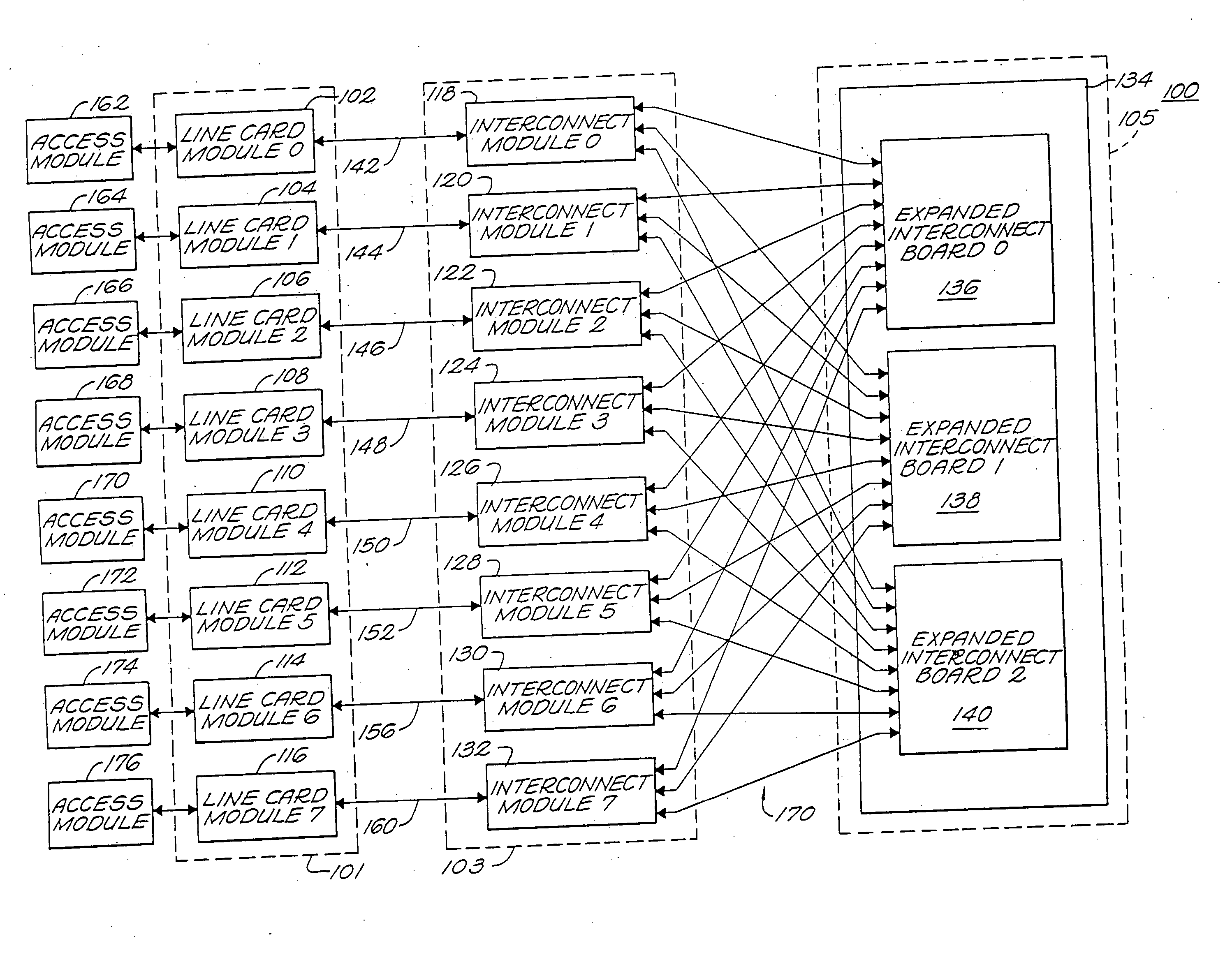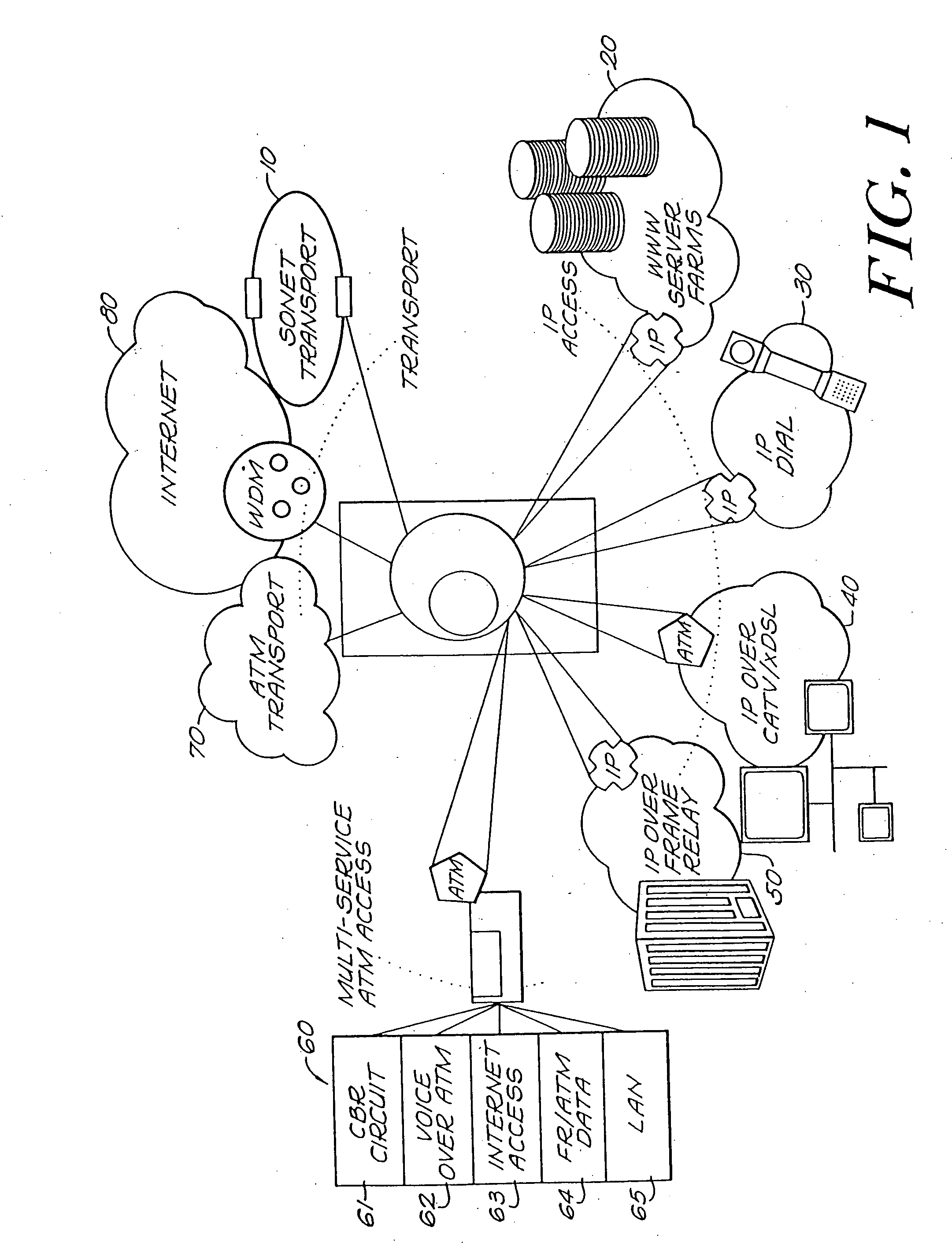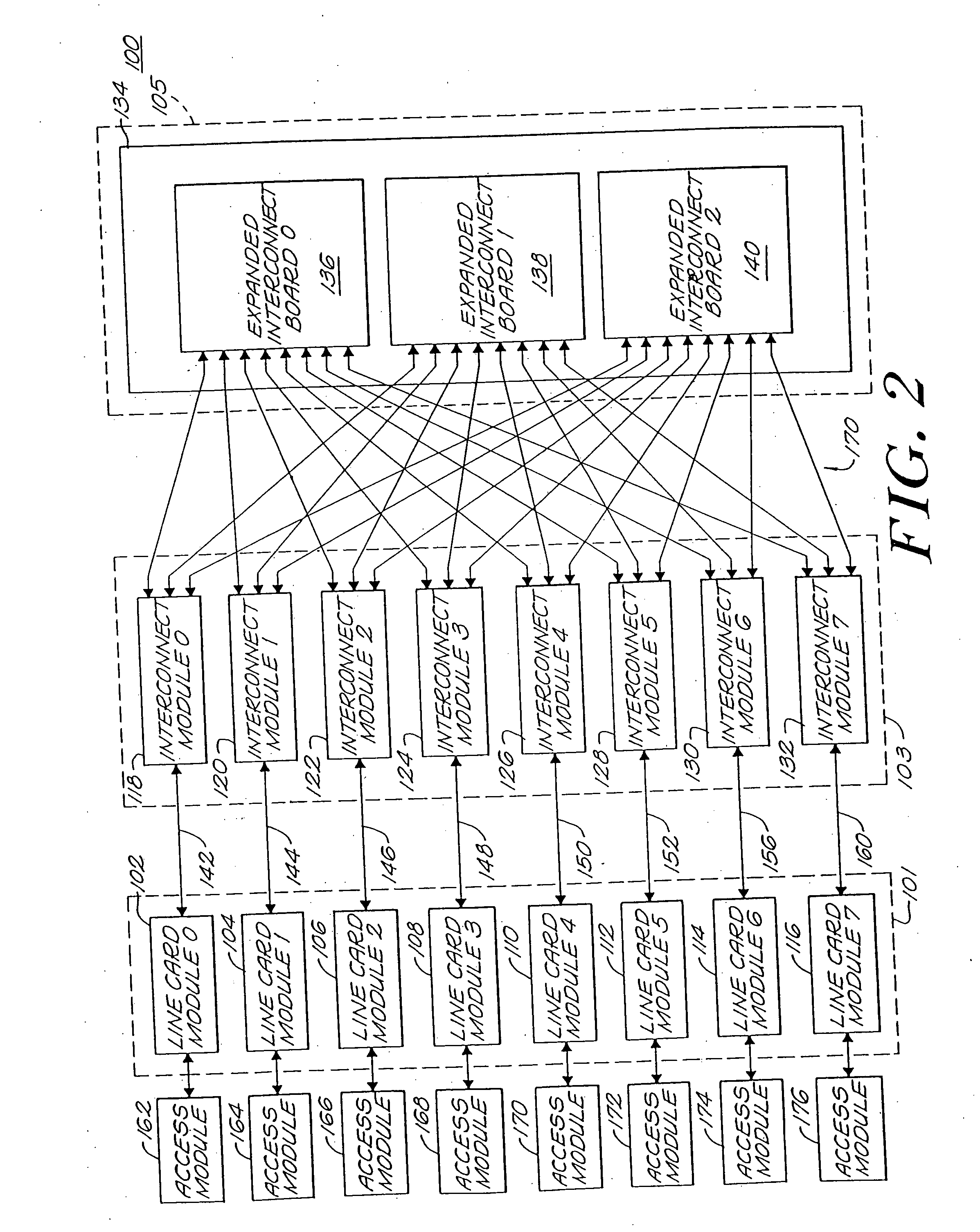Interconnect network for operation within a communication node
a communication node and interconnection technology, applied in the field of communication nodes, can solve the problems of 10 megabits per second (mbps), all information transfer protocols have drawbacks, and the isdn has proved too slow, so as to avoid unnecessary delays and save substantial costs
- Summary
- Abstract
- Description
- Claims
- Application Information
AI Technical Summary
Benefits of technology
Problems solved by technology
Method used
Image
Examples
Embodiment Construction
[0041] As briefly described above, the invention is directed to an interconnection network in a communication node. Communication nodes are junctions for transferring communication signals between a plurality of sources. As such, communication nodes may be required to interface with systems employing a variety of communication protocols and operating at differing information transfer speeds. Prior art systems typically require maintenance of a plurality of networks, each being capable of interfacing with a particular type of source. In contrast, a communication node, embodying features of an illustrative embodiment of the invention, can process information entering the node at a variety of speeds and formatted pursuant to a plurality of protocols. By way of example, information can enter and leave the communication node at OC48, OC12 / STM4, OC3 / STM1, DS3 and E3 speeds. Additionally, information can enter and leave the node in IP- or ATM-based formats.
[0042] Another important feature...
PUM
 Login to View More
Login to View More Abstract
Description
Claims
Application Information
 Login to View More
Login to View More - R&D
- Intellectual Property
- Life Sciences
- Materials
- Tech Scout
- Unparalleled Data Quality
- Higher Quality Content
- 60% Fewer Hallucinations
Browse by: Latest US Patents, China's latest patents, Technical Efficacy Thesaurus, Application Domain, Technology Topic, Popular Technical Reports.
© 2025 PatSnap. All rights reserved.Legal|Privacy policy|Modern Slavery Act Transparency Statement|Sitemap|About US| Contact US: help@patsnap.com



